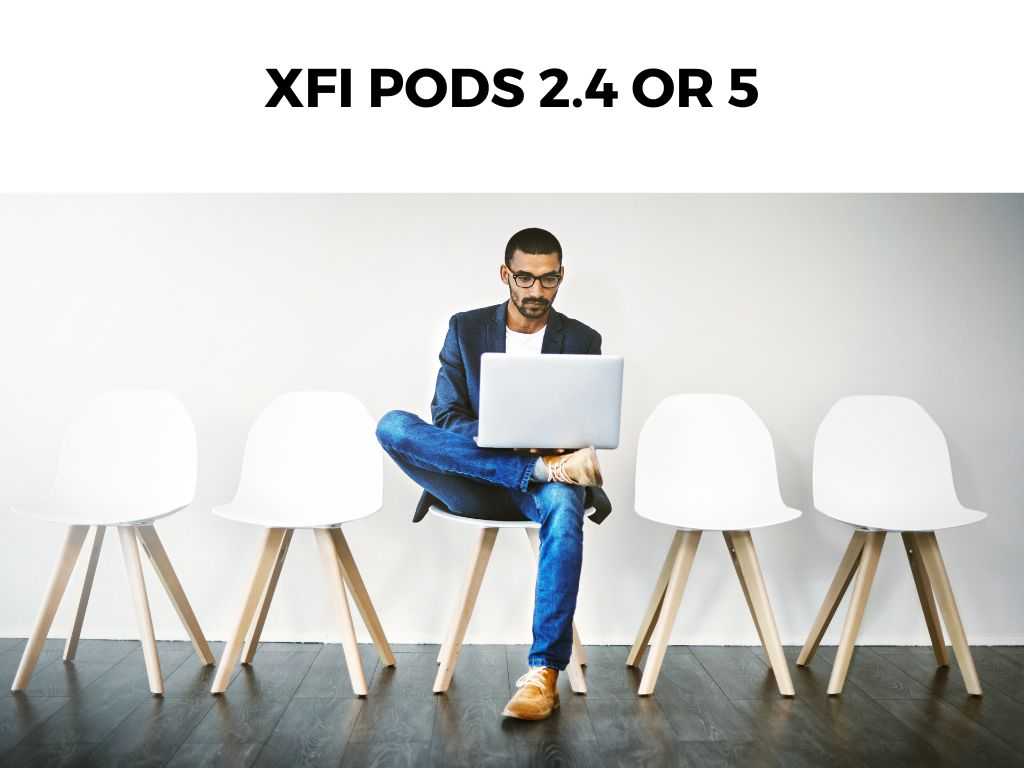
And that’s where xFi Pods come in – small but mighty tools designed to extend your Wi-Fi range and enhance connectivity. But, which frequency should you choose: 2.4GHz or 5GHz? Let’s dive deep.
TL;DR: For the majority of homes, using a mix of both 2.4GHz and 5GHz frequencies with your xFi Pods provides a balanced approach, taking advantage of the range of 2.4GHz and the speed of 5GHz. However, individual needs may vary.
Scroll down to get a detailed answer
Table of Contents
Understanding xFi Pods and Their Magic
Before we delve into the great frequency debate, let’s understand what xFi Pods do:
- Extended Range: Ever have a Wi-Fi dead spot in your home? xFi Pods help eliminate those.
- Smart Network Building: They don’t just boost signals blindly. They create a mesh network, spreading Wi-Fi uniformly.
- Easy Management: Through an app, control and monitor your network’s health and connected devices.
Decoding the Frequencies: 2.4GHz and 5GHz
At their core, 2.4GHz and 5GHz are frequency bands on which your Wi-Fi can operate. Here’s a quick breakdown:
- 2.4GHz: The Marathon Runner
- Pros: Greater range, better at penetrating walls and floors.
- Cons: Slower speeds, more congestion from other devices and networks.
- 5GHz: The Speedster
- Pros: Faster data speeds, less interference from other networks.
- Cons: Shorter range, less effective at penetrating solid objects.
How to Choose Between 2.4GHz and 5GHz
Okay, so now that we’ve laid out the basics, let’s get into the nitty-gritty of choosing:
- Assess Your Home’s Size and Structure:
- Large Homes: I recommend using 2.4GHz for broader coverage.
- Multi-story Homes: 2.4GHz can be more effective at penetrating floors.
- Open-plan or Smaller Homes: 5GHz can be your best bet for speed without worrying about range.
- Check Device Compatibility: Not all devices support 5GHz. Before making a decision, it’s good to know what your devices can handle.
- Network Congestion: If you live in a crowded area with many networks, 2.4GHz can get congested. Switching to 5GHz can offer relief.
- Purpose: If you’re gaming or streaming in 4K, you might appreciate the speed of 5GHz. For general browsing and email, 2.4GHz should suffice.
A Balanced Approach – Why Not Both?
Yes, you heard right. Many modern devices, including xFi Pods, are dual-band, meaning they can use both frequencies. Here’s why this could be a game-changer:
- Smart Switching: Devices will automatically switch between frequencies, based on what offers the best connection.
- Best of Both Worlds: You get the range of 2.4GHz and the speed of 5GHz, without manually switching.
Note: Ensure your main router supports dual-band to make the most of this feature.Your Action Plan
So, how should you configure your xFi Pods? Here’s a simplified guide:
- Set Up Your xFi Pods: Follow the manufacturer’s instructions to set them up.
- Enable Dual-Band (If Supported): Through the app, make sure both 2.4GHz and 5GHz are active.
- Monitor and Adjust: Keep an eye on your connection. If you notice consistent issues, try manually selecting a frequency.
A Deeper Dive into xFi Pods and Frequencies
Now that we’ve covered the fundamentals, let’s take a more intricate look at the aspects that might influence your decision between 2.4GHz and 5GHz for xFi Pods.
Impact of External Interferences
Both frequencies, albeit to different extents, are susceptible to interference:
- 2.4GHz: Given its longer history and widespread use, many devices (like microwave ovens, cordless phones, baby monitors, and more) operate on or around this frequency. This can lead to a crowded and potentially interference-prone environment.
- 5GHz: While it faces less interference from household devices than 2.4GHz, it’s not entirely immune. The growing popularity of 5GHz Wi-Fi and other tech gadgets using this frequency can lead to congestion, especially in densely populated areas.
Note: Always place your xFi Pods and primary router away from devices that might cause interference. Beyond just the basic frequency, modern Wi-Fi standards allow different channel widths which can affect speed: I recommend setting your channel width to “Auto” in your router settings. This way, the router will choose the best width based on the current network environment. Band steering is a feature that encourages dual-band capable devices to connect to the less congested and typically faster 5GHz network. It keeps a balance, ensuring that your 2.4GHz doesn’t become overcrowded while optimizing for speed. If your xFi Pods and router support it, I strongly suggest enabling band steering. While 2.4GHz and 5GHz have been the mainstay frequencies, the Wi-Fi standards that leverage them have evolved: When evaluating your home network, consider not just the frequency, but also the Wi-Fi standard your devices and Pods support. For a home with newer, Wi-Fi 6 devices, ensure your xFi Pods are compatible to make the most of the advancements. Building materials can play a surprising role: While setting up your current home network, always have an eye on the future: In the tug of war between 2.4GHz and 5GHz for your xFi Pods, there isn’t a one-size-fits-all answer. By understanding the strengths and limitations of each frequency, you can tailor your home network to your needs. But remember, in most cases, a balanced mix of both frequencies will provide optimal results. Yes, through the app settings, you can choose which frequency to prioritize. No, dual-band devices are designed to switch seamlessly and improve performance, not hinder it. Most devices, and the xFi app, will display the connected frequency in their network settings.The Overlooked Aspect: Channel Width
Why Band Steering is Your Friend
The Evolution of Wi-Fi Standards
The Impact of Walls and Obstructions
Consider Future Needs
Conclusion
FAQs
Can I manually select a frequency on my xFi Pods?
Will using both frequencies slow down my network?
How do I know which frequency a device is using?
Was this helpful?


